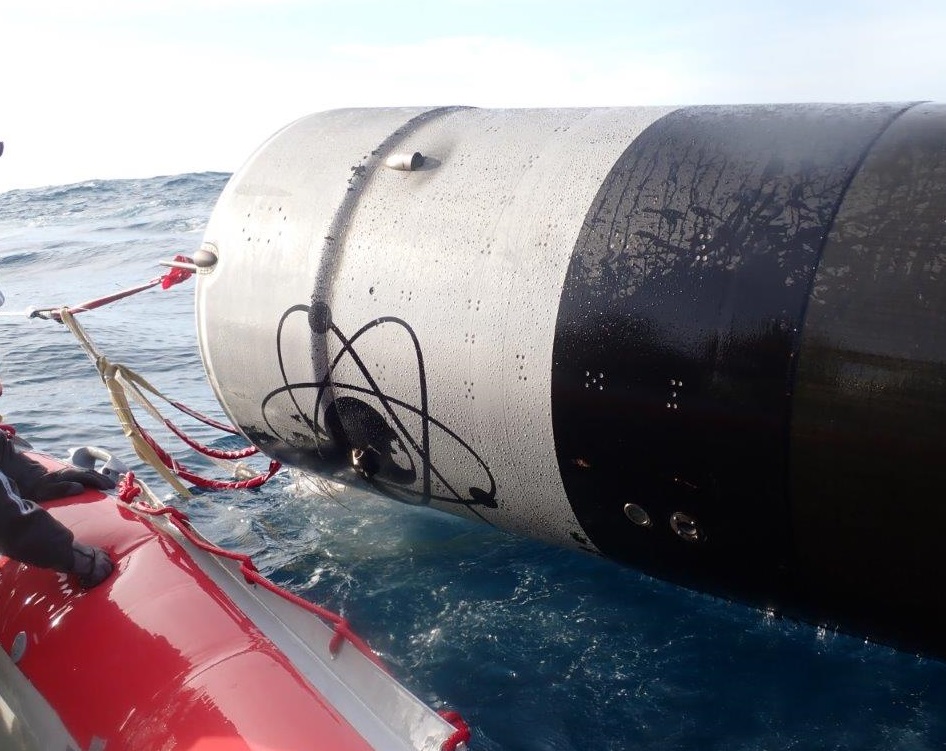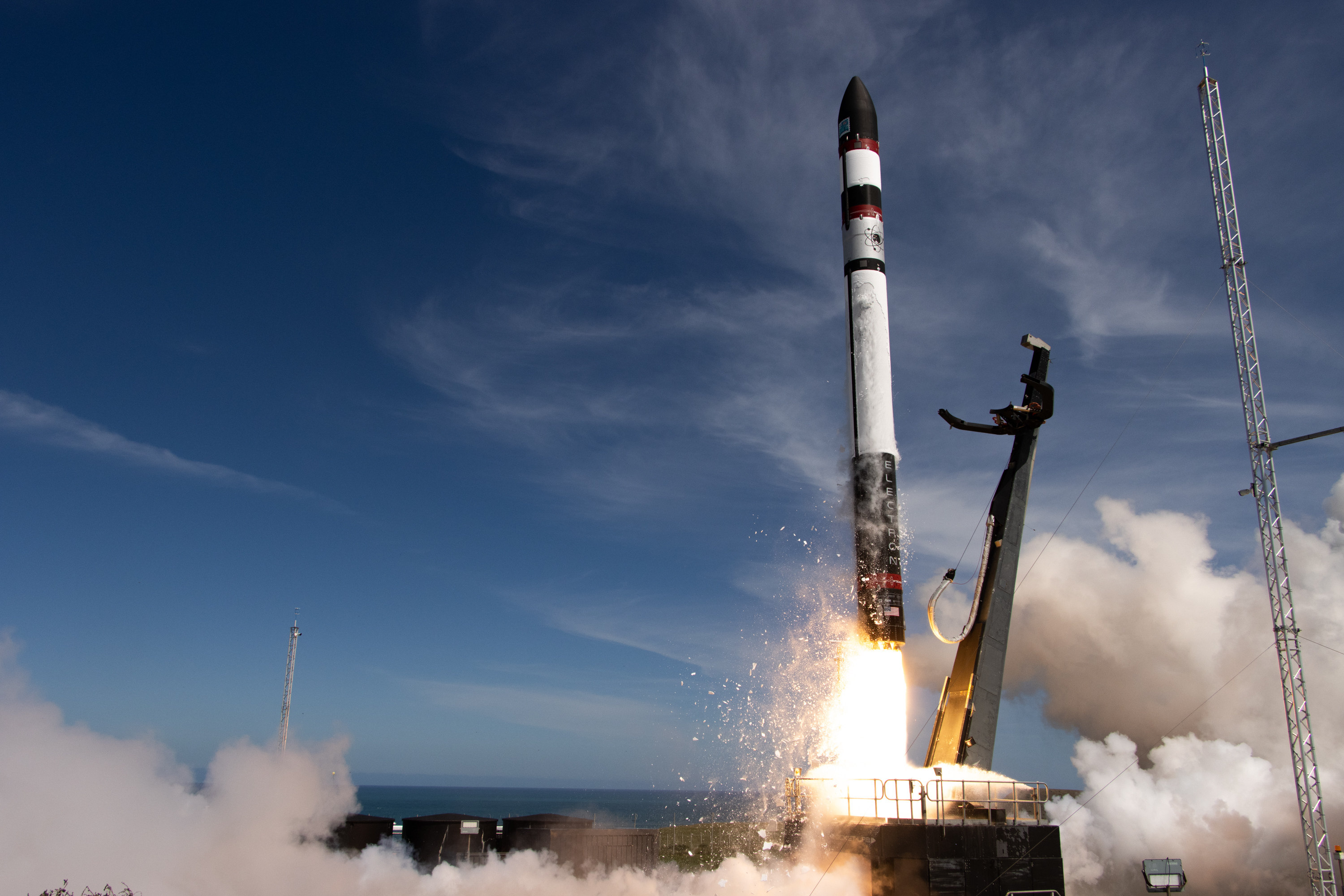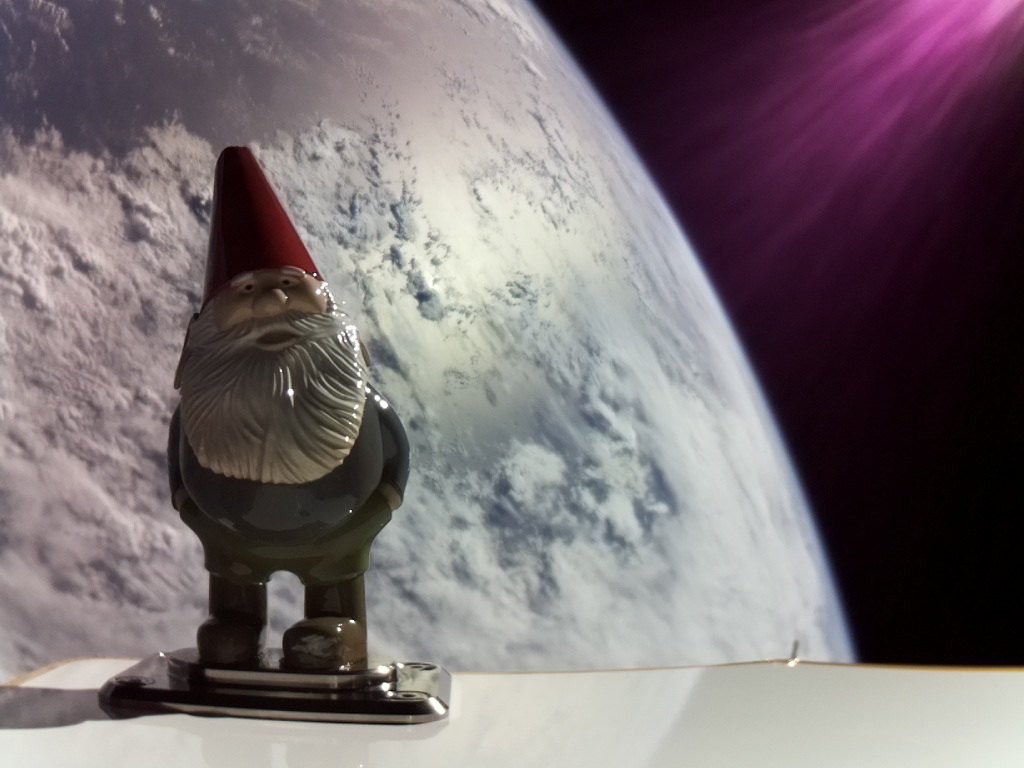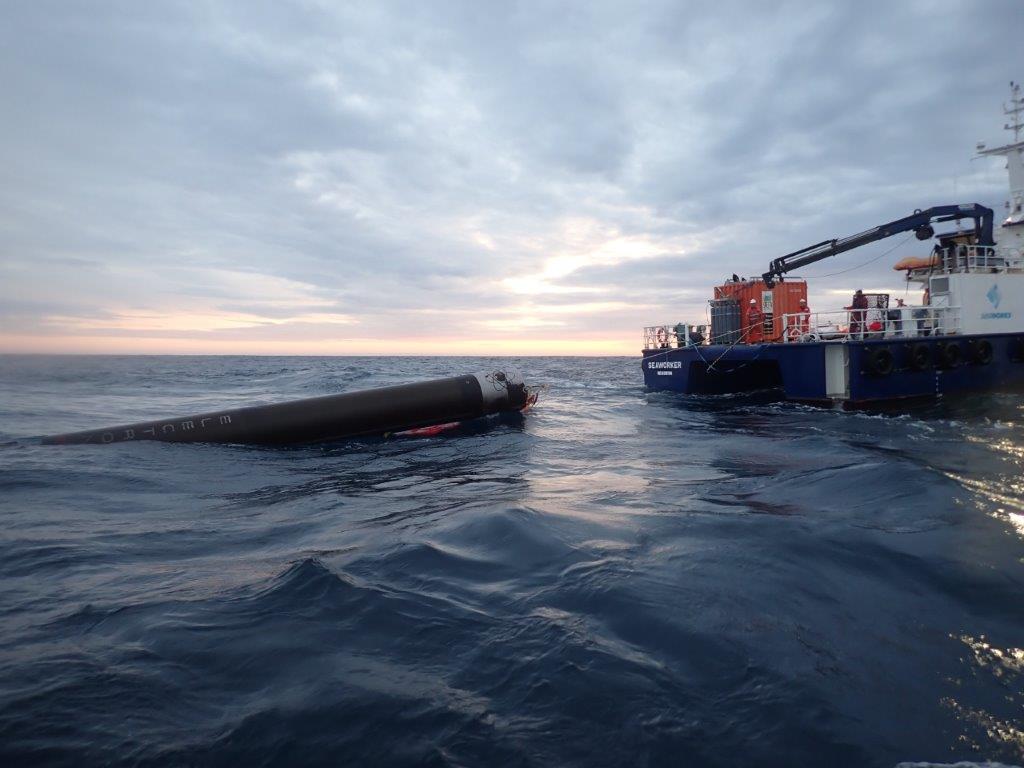Rocket Lab has successfully recovered the first stage of an Electron launch vehicle after it made a controlled splashdown in the Atlantic, marking a major milestone in the company’s quest for a reusable rocket. CEO Peter Beck, speaking to press shortly after the operation, called the mission “a complete success” — and it raised $286,092 for charity to boot.
This was the first major test of Rocket Lab’s improved Electron, which has a modified interstage (above the first stage booster but below the second stage, which takes the payload into orbit) that allows the booster to make a controlled descent after detaching.
The plan for the future is to have a helicopter catch the booster in midair, but this first time the team decided to let it splash down first. “Pulling rockets out of the ocean is just not fun,” Beck noted.
Before the mission even starts, a general idea of the descent area is already known, since the trajectory of the rocket has been carefully planned and the weather monitored closely. As the launch proceeds, the projected descent area becomes more and more clear based on information streamed from the rocket itself.
“Downrange we’ll have a ship and a helicopter based on the ship. It’ll take off at the same time as the rocket and hover over the predicted reentry point,” explained Beck. “The moment we hand over to stage one, it is telemetrying its predicted impact point in real-time. The whole time there’s sort of a real-time feedback loop.”
He pointed out that, should something go wrong with the launch, the helicopter is not at risk of being struck by debris going 900 miles per hour, since the trajectory would be completely different in that case.
After the second stage detached, the first began its descent, hitting about Mach 2 before deploying its pilot chute, then a drogue chute for about a minute to get its speed down, then the main glider chute under which it would normally cruise along a predictable path until being picked up by the helicopter. In this case it was allowed to splash down, however, “within a few miles” of the predicted impact zone. It was going about nine meters per second, or 20 miles per hour, when it hit the water.

Beck was back at mission control, and happy to be so, he said. “Based on the state of the sea, I’m glad I wasn’t out on the boat. The trip back was on five-meter swells. I don’t have particularly strong sea legs myself,” he admitted. The descending stage was sending back sparse but accurate telemetry, however, which he was watching as the second stage continued its journey. “It felt like cheating, to take your eyes off the ascent to watch the reentry.”
(He added that “if you were in the room, you’d probably have described me as a giggling schoolboy.” Another Rocket Lab representative on the call confirmed this assessment.)
The recovery ship collected the booster shortly after splashdown and engineers are even now tearing it apart to examine the various parts for wear and damage. “The reentry environments exceed the ascent environments,” Beck explained, meaning that the hardware faces different and more severe conditions in its semi-controlled descent than in the meticulously planned launch.
Although they hope to requalify some components for flight, the engines and a few other parts will not live to launch another day. “It’d be pretty unfair on the engines given the ride they had. It got pretty roasty down there,” Beck said.

That’s all part of the plan, though. Using data from this descent the first stage’s heat shield and components will be modified and reinforced to better cope with the rigors of reentry. “We’ll do engines in the future,” Beck said. “The goal is to take the whole stage, charge it up and fly it again.”
Simple to propose, but a complex task in that every component must be checked and recertified. But given this can be done in parallel with the main Electron production line — which Beck said is turning out a launch vehicle every 30 days and getting faster every month — it should lead to a substantial increase to the number of rockets the company has on hand.
The cost impact of recovery, flying recertified hardware and other aspects of this are still very much in flux, Beck emphasized. “But the majority of the cost of building an Electron is the stage one, so if you can change that, you can change the economics of the vehicle. It would be nice to have it all figured out next year but it’s very possible it won’t be,” he said.
One thing seems certain, though: Reusable rockets are clearly the future if cost is a factor at all.
The launch was a great success in another measure as well: Among its numerous deployments was a 3D-printed gnome whose ride was paid for by gaming giant Valve Software founder Gabe Newell. He promised to donate a dollar to Starship Children’s Hospital for every view on the launch’s live stream, and that added up to $286,092.
Gnome Chompski, as he’s called, probably burned up by now, but had a brief and exciting life in space, producing some memorable photos.
































Comment